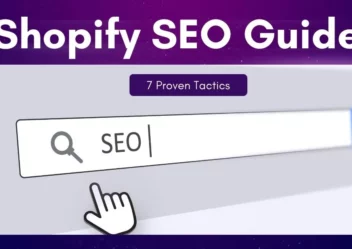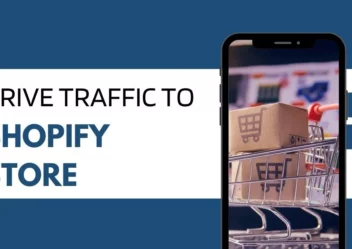How to Create Shopify Newsletter Marketing Campaigns
Email marketing plays an important role in the success of marketing strategies of any ecommerce business. Regarding email marketing, one of the most popular things ecommerce merchants must focus on is the Shopify Newsletter.
If you are without knowledge of the Shopify newsletter, in this article, this article is for you. Arrowtheme will instruct you to efficiently generate Shopify newsletter marketing campaigns with simple steps. Then, let’s explore with us right now!
What Is The Shopify Newsletter?
A Shopify newsletter is a mass email marketing campaign that Shopify stores send out to a large number of email subscribers regularly. This is one of the best ways to build solid relationships with current and new clients.
Besides, to motivate individuals and reinforce brand awareness, Shopify newsletters typically feature blog posts, corporate updates, and lifestyle graphics. Moreover, it can also include special offers or contests to keep members interested and assist in increasing sales. Moreover, it can also include special offers or contests to keep members interested and assist boost sales.
An email newsletter isn’t the same as a regular newsletter.
- Firstly, transactional emails are personalized for each client
- Secondly, automated emails including welcome, abandoned cart, win back, and birthday emails are triggered by certain actions
- What’s more, promotional emails are only concerned with instant conversions.
Plus, you should usually arrange a weekly or monthly newsletter in your email schedule with the express objective of reminding people about your Shopify business and encouraging them to revisit it.
Because you want to incorporate up-to-date ecommerce content and information that aligns with your current marketing goals, it is usually manual rather than automatic. And it is not like a welcome series, where everyone should receive the same emails when they sign up.
Furthermore, a Shopify newsletter is a continuous effort and not a one-time event. In particular, each subscriber should receive a distinct sequence of newsletters depending on when they sign up. After signing up, they will begin getting the next newsletter you send, similar to how a newspaper subscription works.
Why Shopify Merchants Need A Newsletter Marketing Campaign
Any ecommerce marketing approach must include email. The following are the most significant advantages you need to know:
- First and foremost, it is a great bridge of communication between customers and subscribers.
- Secondly, because it isn’t managed by a platform or organization, you won’t have to pay for views or clicks like you would with adverts. As a result, this means that email has a high return on investment (ROI), specifically, $44 for every dollar invested.
- Thirdly, people are more accepting of email marketing, especially in light of GDPR. It requires them to explicitly opt-in to be added to a marketing email list. Therefore, their overall opinion is more favorable. On the other hand, ads and retargeting are frequently regarded as obtrusive and irritating.
- What’s more, personalized and relevant email campaigns can bring value to the consumer experience.
What Are The Essentials Of Shopify Newsletter Marketing?
Before starting to create your first Shopify email, you should consider the type of communication you want to establish. Promotional and content-based email newsletters, for example, are the most prevalent forms of email newsletters used by Shopify ecommerce businesses.
Besides, before we discuss how to build an email newsletter for your Shopify store, don’t forget to look at how they differ:
Promotional
Promotional newsletters are designed with the key goal of advertising a product or service that you want to sell.
According to research, 59% of consumers think professional promotional emails affect their purchasing decisions, resulting in higher ROI you can gain.
Content-based
The emails you send to engage your audience are called content-based newsletters. First of all, you may use content-based emails to promote your most recent blog post.
Besides, it also allows you to inform them about a new product/service or give them an ebook and invite them to enter a competition. Best of all, these types of emails are great for building relationships with subscribers as well as moving them down the marketing funnel.
What’s more, another thing you also need to think about is the design of your email newsletter. If you want to be able to recognize your emails right away, sticking to your identity rules in terms of font, color scheme, images, and tone of voice is far critical.
Most crucially, as a general rule, you should always ask yourself the following three questions before sending an email:
What Is Your Email’s Purpose?
The aim of the email should be clear, as evidenced by the call to action (CTA). It is the same goal you will have in mind as you write your material and track your campaign’s success. Besides, deciding your purpose ahead of time can help you stay on track and keep your email clean and succinct.
For instance, firstly, “Is your goal to entice potential buyers into your digital marketing funnel?” Secondly, “Do you want them to go to your blog article and read it?”. Moreover, you need to understand the goal will help you write an email copy that is relevant to your message.
Does The Copy Align With Your Call To Action (CTA)?
Your CTA’s main goal is to get them to click on the link or button. Following that, you need to make sure everything you write before the call to action is in line with it. And, in particular, you shouldn’t try to sell a product or service through your email because the sales page will be in charge of that.
Do You Have A Catchy Email Subject?
The subject line of your email has a big impact on whether or not people open it. You must analyze any open rate statistics you have from previously sent emails to determine how you might improve the numbers.
Not only that, you also need to look for open rate benchmarks for your industry if you don’t have any data from previous campaigns.
How To Create A Shopify Newsletter Marketing Campaign Efficiently
Step 1. Using a signup form to get email subscribers
To begin, you can build your Shopify mailing list by using newsletter sign-up forms and popups. Most importantly, if you want to send them newsletters or other types of marketing emails, you must first get their permission.
Besides, having their contact information for transactional purposes does not imply that they agreed to receive email marketing, instead, they must expressly opt in. In particular, you must bear in mind to never purchase email lists. Because it will have a bad impact on your online store’s and email address’s reputation.
What’s more, people are more likely to sign up for marketing emails if you offer them something of value for free. Alternatively, in exchange for an email address, you should provide discounts and exclusive offers.
Furthermore, casual visitors may also fill up a signup form if you offer exclusive tips or information, quiz results, or access to a members-only zone on your website.
Step 2. Consider who should receive your Shopify newsletter
In addition, you will have the option of selecting which subscribers will get your newsletter. To do so, you need to navigate to the “To” field and choose which segment of your audience will receive this newsletter. Then, you can choose whether to send this email to new or returning customers at this stage.
On the other hand, with the help of Shopify Email, you can easily develop more sophisticated target groups based on factors like language, date of the last purchase, date of becoming a customer, and other filters.
For instance, you may now target different segments with customized Shopify mailings based on their interests or location. After choosing your target, you should write the newsletter’s subject line and preview the text.
Step 3. Create a Shopify newsletter design
You can reuse the same email template and merely modify the content because a newsletter is a continuous campaign. When it comes to this stage, your logo and brand colors, social network links, CTA buttons, and unsubscribe links are all essential features.
Best of all, visuals can also aid with brand awareness. Following that, you should check best practices for newsletter pictures for more information.
Step 4. Send your email and keep track of the results
As soon as everything is ready, let’s send your Shopify newsletter or schedule it to go out on the scheduled date. In particular, you can send up to five email campaigns every week with Shopify Email, each with a limit of 40,000 subscribers.
Furthermore, keeping track of important email data like open and click rates can help you improve email quality a lot in the future. Although this process may take some time to get right, you will only be able to do so if you keep track of how your email subscribers react to different email content, sending times, etc.
Worth-using Shopify Email Marketing Apps
In case you picked Shopify over all other ecommerce systems for your online business, you should try to send Shopify newsletters from there as well. Not only that, you may use Shopify email to send newsletters if you have a premium Shopify account. Moreover, the Shopify Email app can be easily added to the Marketing section of your Shopify admin.
In terms of the premium plan, Shopify allows you to send 5 campaigns per week or 2,500 emails each month. Best of all, templates, product imports, and basic email stats are included for you to send the Shopify newsletter successfully.
On the other hand, when utilizing Shopify Email, you may face several drawbacks such as:
- Firstly, no A/B testing.
- Secondly, there is no email automation.
- Thirdly, no possibilities for customization including dynamic fields, or merge tags.
- Fourthly, there are no comprehensive reports. Hence, you can’t see who received the email or who unsubscribed, but only totals.
- Moreover, there are no GDPR compliance fields.
- There are a few segmentation options and no usable CRM data.
- In addition, the design options of the mail builder are quite simple and basic.
- Alternatively, users express their dissatisfaction with the delivery of their orders.
- Finally, because they count both campaigns and email addresses reached, determining pricing constraints might be difficult.
Despite some advantages, in general, Shopify Email still to be a decent starting point for newcomers to ecommerce marketing.
In Conclusion
The importance of Shopify newsletter marketing has never been greater. From it, you can easily expand your Shopify business organically, build a relationship with your audience, and generate traffic to your website by obtaining access to your customers’ inboxes.
While Shopify Email isn’t as strong as third-party email marketing apps, it does make it simple to get started with newsletters for free. In short, it is still the best solution for improving the effectiveness of your marketing strategies.
Then, in case you have any queries let’s CONTACT US for more details.
Contact US – ArrowTheme:
– Email: [email protected]
– Facebook: Facebook.com/ArrowThemeTeam
– Website: ArrowTheme.com



